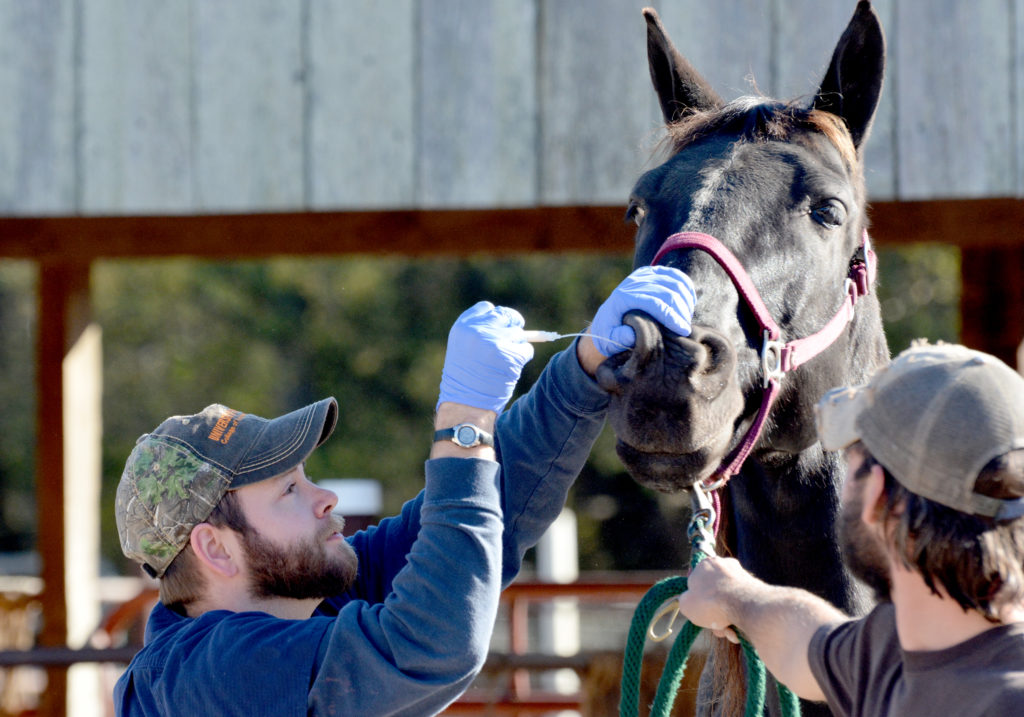The fall visit is concentrated on preparing for breeding of the fall calving herd. Work in this visit includes pre-breeding vaccinations on all females and performing breeding soundness exams (BSE) on all bulls. This includes bulls that will cover our cows for the year and those offered for private sale.
The spring vet school visit covers a wider array of work. The week is focused on the weaning process for the calves. Calves will be administered a round of booster shots for respiratory and blackleg, growth implants for the steers, and weaning weights will be recorded.

All calves will have an ear notch pulled to be tested for Bovine Viral Diarrhea (BVD-PI). Castrations will be performed on a few remaining males that do not make our final selection for replacement bulls. In addition to the calf work, cows are given a yearly booster shot for Lepto and blackleg and a final pregnancy status will be determined. Pregnancy status plays a valuable role to maintain a confined calving season and allows us to cull open cows.
The Spring Class also gives those students specifically interested in potential equine practices, the opportunity to work with the Ames horse herd. Vaccinations, dental floats and other routine maintenance protocols are implemented. Students have the opportunity to practice dental aging on horses with actual known birth dates as well as giving a description of respective hair coat color with a wide variety of horses available for use.